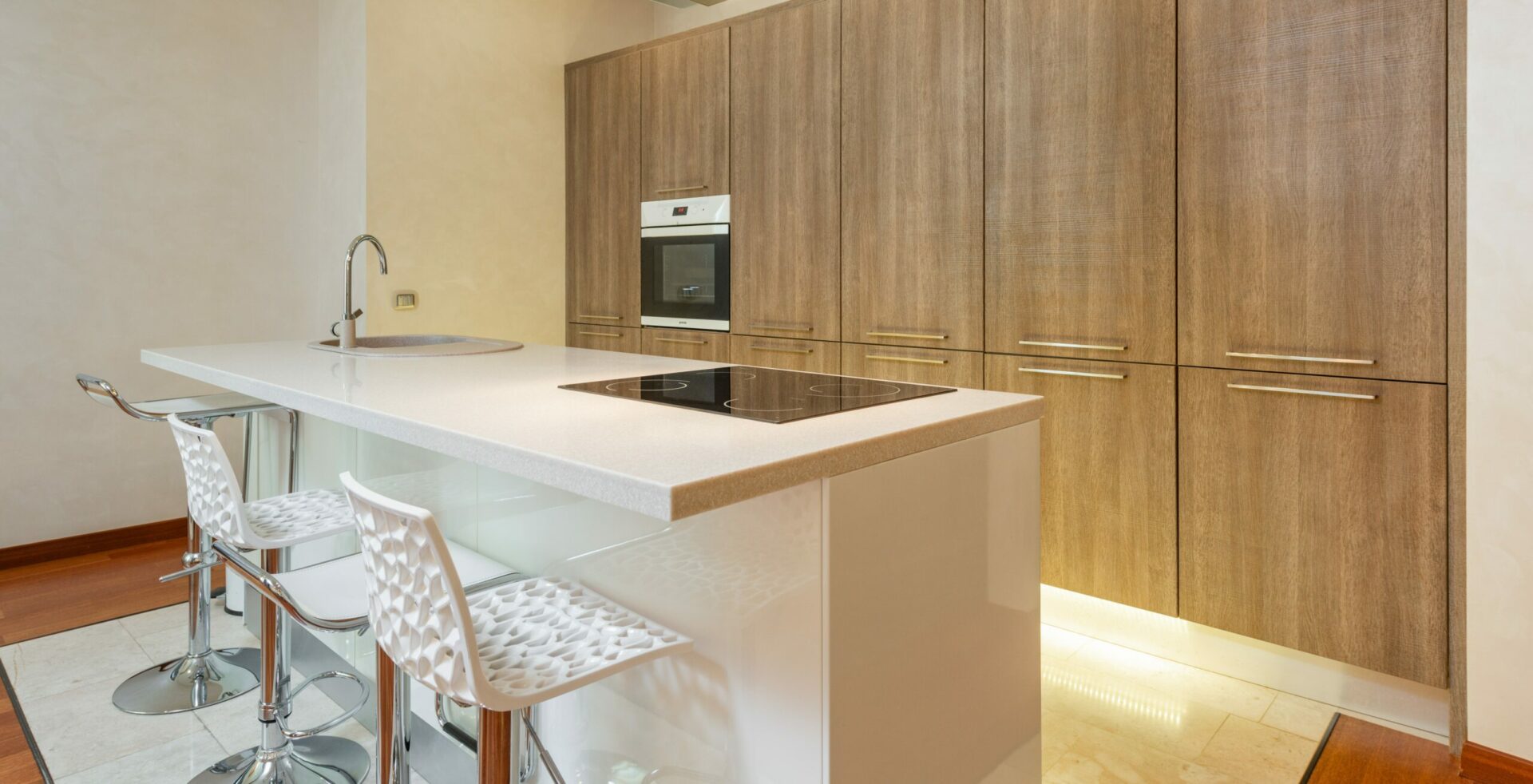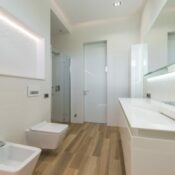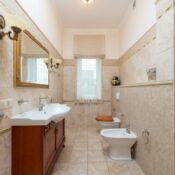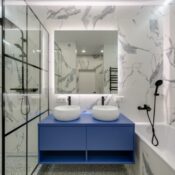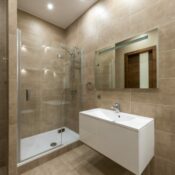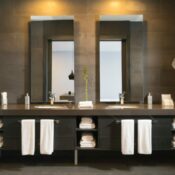Have you ever wondered, do you need a backsplash for your bathroom vanity? It could be that you already love your bathroom fittings and sanitary ware as they are, and therefore wouldn’t want to make any adjustments. However, most people and experts can’t stop insisting on the need for a backsplash, claiming how this addition is very beneficial for your bathroom walls. So what should you do, should you really add a backsplash to your vanity or is it safe to leave it as it is?
Do You Need a Backsplash For Your Bathroom Vanity?
| Unless your bathroom vanity includes a pedestal sink that doesn’t sit against the bathroom wall, you actually do need a backsplash for your bathroom vanity. Since the wall behind the sink is usually exposed to splashes, a backsplash protects it from rot, mildew and mold. Besides, the numerous designs of backsplashes increase the aesthetic appeal of the bathroom. |
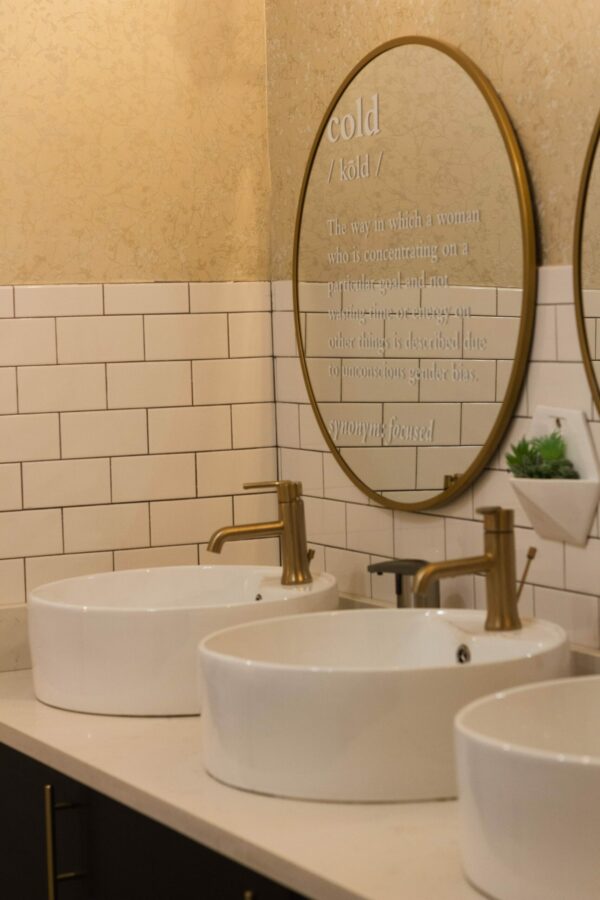
What Is a Vanity Backsplash?
So what exactly is a bathroom vanity backsplash? Simply put, a backsplash is a wall covering that covers the bathroom wall behind and above your vanity. While most backsplashes are usually tile, these can also be made of metal or other impermeable materials. The typical vanity backsplash is installed about 3-4 inches from the counter top of the vanity.
Still, there is no specific rule for this. You may opt for a bigger backsplash that extends even two feet from the vanity’s counter, or tile the distance between the bottom of the mirror and the top of the counter; the choice is yours. On the other hand, for small bathroom vanities, or bathrooms that only feature a pedestal sink, you can opt for a backsplash that either goes all the way to the bathroom flooring or only extends some distance below the vanity top.
RELATED = = = > Should a Bathroom Vanity Be Centered?
What Happens if You Add a Bathroom Vanity Without a Backsplash?
Installing a bathroom vanity without a backsplash can be compared to standing outside in the rain without a raincoat or umbrella. The bathroom walls, especially those behind the sink, are prone to splashes every now and then. Washing hands, brushing teeth and washing the face are just a few examples of the bathroom activities that lead to the wall being splattered again and again. Overtime, such splashing and exposure to moisture can lead to great damage to your bathroom walls.
Consider these three main issues associated with not having a bathroom vanity backsplash:
A. Warp and Rot
If the wall above and behind the bathroom vanity does not have any backsplash, it will collect moisture from all the splashes and splattering. As the drywall collects more and more moisture, it could begin rotting and warping.
B. Mold and Mildew
The continuous exposure of the dry wall to moisture could lead to the development of mold and mildew. Mold thrives very well in moist conditions, usually growing undetected and spreading quickly to other rooms in the house. High accumulation of mold in the house usually poses serious health risks, such as allergies and asthma. Furthermore, when mold spreads into other areas in the house, it will be even more expensive to remove and remediate due to the substantial damage it would have already caused.
C. Wall and Paint damage
When water splashes and splattering occur, the water seeps into the wall, sitting behind the sink. And if the “idle” water is left unattended, it usually leads to damage to the wall. This means loss of money as you will need to spend even more money repairing the damaged call. Besides, the accumulation of water could lead to damage of the wall paint, including waterproof paint.
Benefits of Having a Bathroom Vanity Backsplash
As mentioned at the onset of this article, a bathroom vanity backsplash helps to protect the walls from any damage associated with water splashing and splattering. For example, it prevents the growth of mold and mildew on the bare dry walls that are highly susceptible to water damage. It also prevents any warping and rotting of the walls which tend to occur when moisture seeps through the walls and sits there for a long time. By preventing such seemingly minor, yet very big damages, the vanity backsplash keeps the walls in good condition for many more years to come.
Besides ensuring the safety and durability of the bathroom walls, a bathroom vanity backsplash also has two additional advantages:
A. Facilitates Easier Cleaning
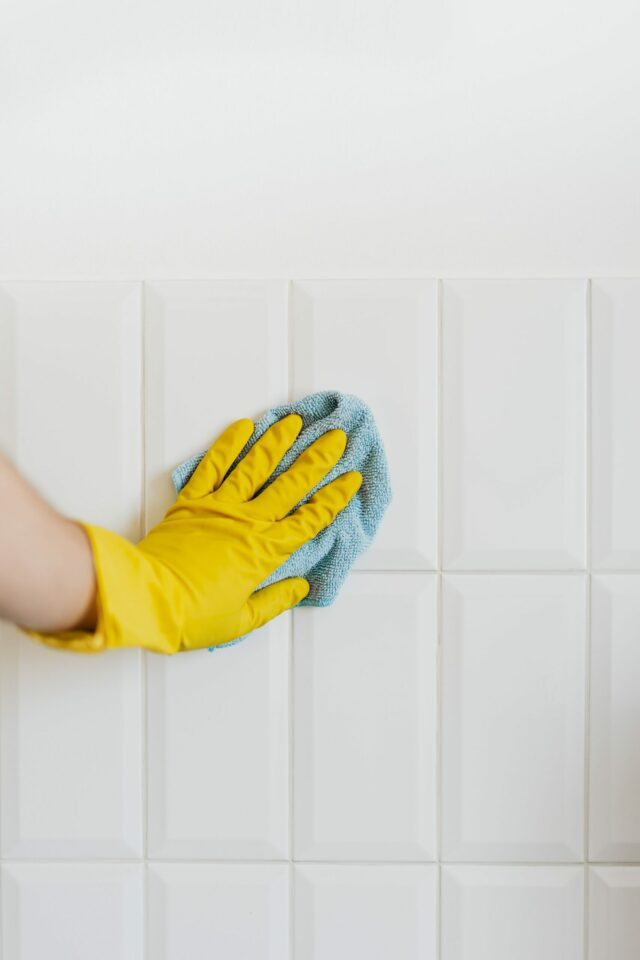
It is much easier to clean a bathroom vanity with a backsplash than one without. In fact, most backsplashes can be easily cleaned using a wet rag or sponge; all you need to do is to simply wipe down the walls with the rag or sponge and they will be left sparkling clean.
B. Increases Aesthetic Appeal of the Bathroom
Bathroom vanity backsplashes come in different sizes, shapes and colors. With the wide variety of backsplashes, you can rest assured of finding the ideal pattern or design that will perfectly compliment your bathroom. You can even choose a type of backsplash that will add a personal touch of aesthetics to your bathroom. So if you are looking to add some style and elegance in your bathroom, you would do well to consider adding a backsplash to your bathroom vanity.
RELATED = = = > Is it Cheaper to Buy a Premade Vanity?
What Are the Most Common Backsplash Materials?
The following are the most common materials used for bathroom vanity backsplashes:
Open your mind with this Bathroom vanity backsplash ideas
Marble – Marble is a natural stone that adds more splendor and style in the bathroom when used as a backsplash. However, it is more costly than most other backsplash materials. Also, as a natural stone, it is prone to cracking, hence requiring sealing and regular maintenance to keep it in place.
Metallic tiles – As the name suggests, metallic tiles are usually made from metals, such as copper, stainless steel, iron and titanium tiles, just to mention a few. They are the latest trends in modern, luxury bathrooms. However, while these tend to look gorgeous immediately after installation, they require sealing and constant maintenance if they are to retain their original finish.
Ceramic – The low cost and affordability of ceramic tiles make them a good choice for backsplashes. Besides, these tiles have beautiful designs that add to the aesthetic appeal of any bathroom. Backsplashes with accent tiles compliment bathrooms with neutral colors.
READ MORE ON IT = = = > What is the Most Popular Color for a Bathroom Vanity?
Laminate – Laminate is ranked as the best backsplash material for all types of bathroom vanities. It comes in large formats, so that it fits all sizes of vanities, leaving no space exposed to water splashes. The material often comes in solid color and is sold at very reasonable prices.
Tile – When added as a backsplash, tiles create a sparkling accent that matches well with the bathroom vanity. And if you are looking to add a shimmery glass effect to your bathroom walls, consider installing vibrant mosaic tiles as your backsplash.
Waterproof wallpaper – While not all wallpapers can be added to the bathroom, there are water-resistant ones that create ideal bathroom vanity backsplashes. These wallpapers are designed with a thick vinyl coating to deflect any moisture and keep the walls safe from any moisture damage. What’s even better, waterproof wallpapers can be removed and washed easily.
Granite – Granite is one of the most popular backsplashes for bathroom vanities. Not only is this material eye-catching, but it also very easy to clean. Most granite bathroom vanities usually come with a matching granite backsplash of at least 4 inches.
Glass – Glass tiles are made from thin glass pieces. They feature a translucent glaze that makes them a beautiful addition as a backsplash. They come in a wide variety of patterns and color options. This backsplash material is very easy to clean.
How to Install a Backsplash on a Vanity
FAQ
What is the Ideal Height for a Bathroom Vanity Backsplash?
The most recommended height for a bathroom vanity backsplash is 4 inches. However, this usually applies to the standard size faucet. For larger faucets, you might need a backsplash that is higher than 4 inches. You can also opt to extend your bathroom vanity backsplash up to the ceiling, or even double it from 4″ to 8″.
RELATED = = = > What are the Different Types of Vanities?
Are There Any Other Alternatives to a Bathroom Vanity Backsplash?
Fortunately, yes. If you do not wish to add a vanity backsplash in your bathroom, there are other design options you can consider. For example, you could tile the entire bathroom walls to prevent any splash damage. Alternatively, you could create an upstand using the same material as the vanity worktop. Just like the tiles, the upstand would effectively help to prevent splash damage on the bathroom walls.
Conclusion
Do you need a backsplash for your bathroom vanity? They say prevention is better than cure. And a bathroom vanity backsplash is just the ounce of prevention you need. With a quality backsplash, you will not need to worry about any mold or mildew problems. And besides keeping your bathroom walls free from any damage, you will also find it much easier to clean your bathroom vanity.
So if you were holding back from investing in a backsplash for your bathroom vanity, this is the sign you need. Install an attractive backsplash that perfectly compliments the theme of your bathroom, and watch how your bathroom space goes from dull and boring to the most appealing, eye-catching room ever!
READ ME NEXT = = = > Can I Wash Clothes With Just Water?
